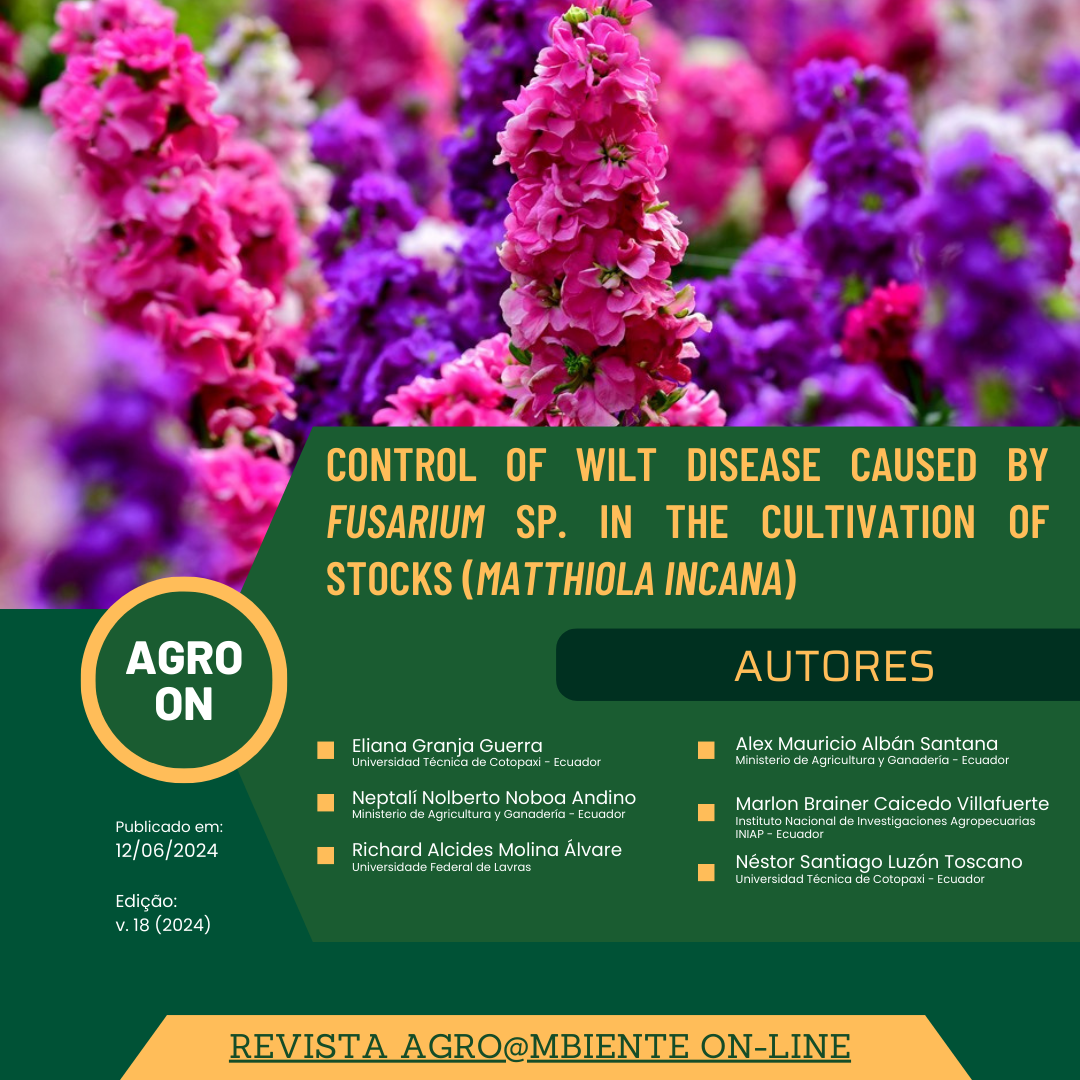Control of wilt disease caused by Fusarium sp. in the cultivation of stocks (Matthiola incana)
DOI:
https://doi.org/10.18227/1982-8470ragro.v18i00.7848Palabras clave:
Matthiola incana. Stocks. Bacillus Subtilis. Trichoderma sp. Severity.Resumen
In greenhouse cultivation of stock (Matthiola incana), the main causative agent of its death is the fungus Fusarium sp., especially in the early phenological stages, resulting in significant losses during the first four weeks of cultivation. Therefore, the objective of this study was to evaluate phytosanitary control techniques (chemical, biological, and antibiotics) to reduce Fusarium sp. infection in stock (Matthiola incana) cultivation. The experiment was conducted in a randomized block design with five treatments (control; chemical products; biological products, antibiotics, and product combinations) and three replications. The chemical active ingredients used were aluminum phosphite, iprodione, captan, and Hymexazol. Biological solutions included Trichoderma sp. and Bacillus subtilis, while antibiotics used were Weed Pirocontrole, Kasugamicin, Polioxin B, Azoxystrobin, and Kresoxym methyl. Additionally, product combinations were evaluated, such as Fosetyl aluminum, Bacillus subtilis, Polioxin B, Hymexazol, and Azoxystrobin. Control efficacy was measured based on the severity of fungal growth in culture, while mortality represented the loss rate at the end of the experiment. The combined treatment of techniques was superior, with a mortality rate of 13.77%, compared to the 63.00% recorded in the absolute control group. These results underscore the importance of an integrated approach to Fusarium sp. control in stock cultivation, emphasizing the effectiveness of combining different phytosanitary techniques to minimize losses and promote successful production.

Descargas
Publicado
Número
Sección
Licencia
Derechos de autor 2024 REVISTA AGRO@MBIENTE ON-LINE

Esta obra está bajo una licencia internacional Creative Commons Atribución-NoComercial-SinDerivadas 4.0.
Declaro por mi nombre y en nombre de los otros autores que represento el acto de presentación de este artículo, la Revista Agro@mbiente On-line que: • 1. El contenido del artículo es el resultado de los datos originales y no publicados o presentados a otras revistas. • 2. Además del autor principal, todos los co-autores participaron en el trabajo lo suficiente como para hacer pública su responsabilidad por el contenido. • 3. En caso de aceptación del artículo, los autores coinciden en que los derechos de autor relativos a ellos pasará a ser propiedad exclusiva de la Revista Agro@mbiente On-line, prohibida cualquier reproducción, total o parcial en cualquier forma o medio de difusión, impresa o electrónica, sin la autorización previa y necesaria solicitada y, si obtenida, debe aparecer gracias a Lo periodico Agro@mbiente On-line.

